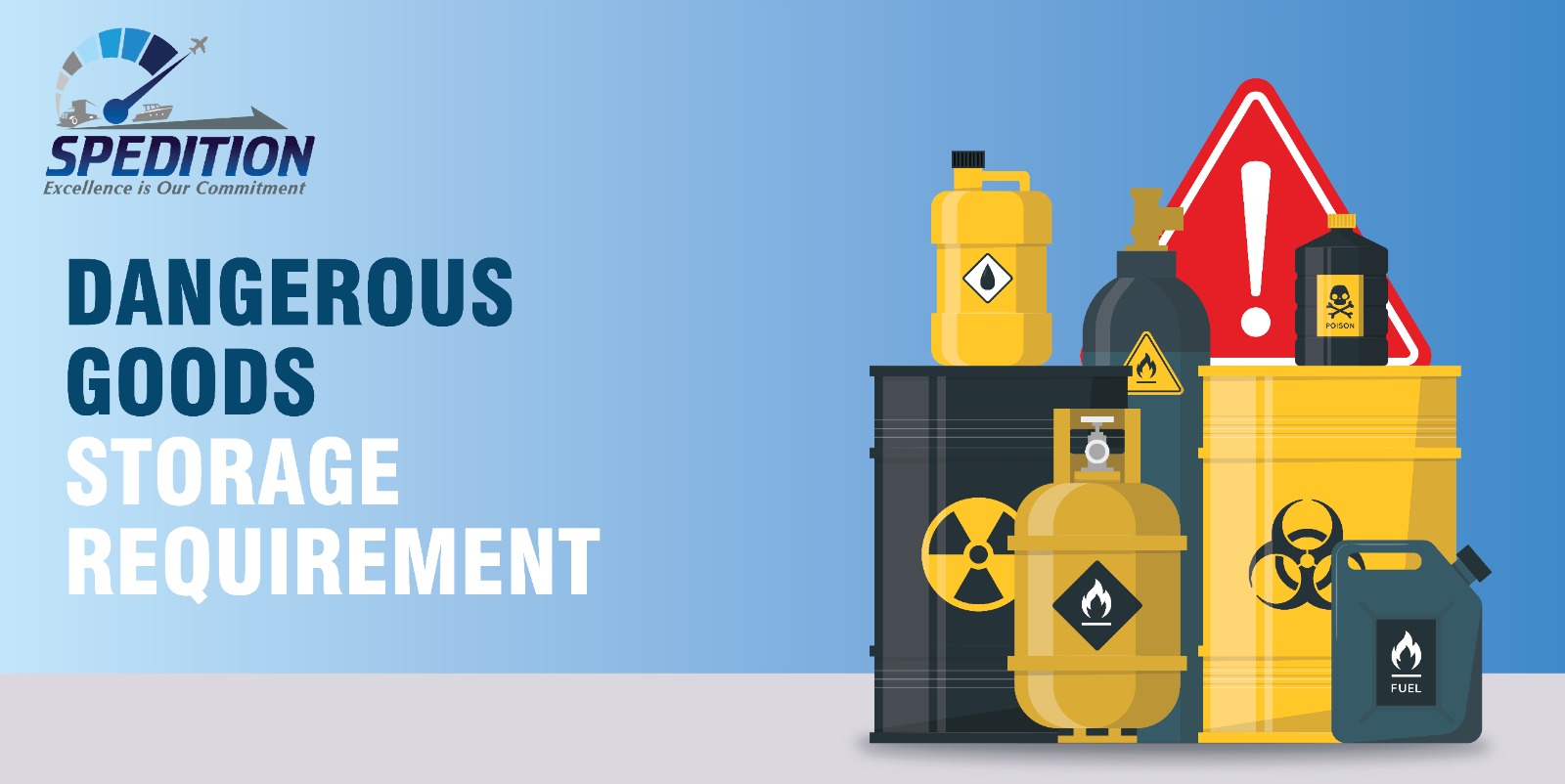Introduction
In this globally connected world, logistics have become a lifeline for world trade today. For trade and economic growth to thrive there must be smooth transfer of goods from producers to consumers. At the heart of this intricate process is goods handling in logistics which is an important factor for safe and efficient transportation.

Best Goods Handling In Logistics – Spedition India
As a leader in the logistics industry, Spedition is skilled in goods handling and offers expectational support to address the different needs of firms all around the globe.
Thus, no successful company can ignore good handling in logistics when it comes to transporting their products as some are engaged in specialized freight forwarding companies. In contrast, others run cargo transport businesses across countries.
All these make efficient logistics indispensable – it facilitates proper goods handling that eventually results in cost-cutting measures, minimizes risks across supply chains, and ensures overall supply chain efficiency.
What is Goods Handling in Logistics?
Goods handling in logistics refers to the process of moving, protecting, storing, and controlling products throughout the logistics chain.
It involves various activities such as loading, unloading, packaging, labelling, and sorting to ensure that goods reach their destination in perfect condition.
Types of Goods Handling in Logistics:
- Manual Handling: Involves human labour, often used for smaller, more delicate items.
- Automated Handling: Utilizes machines and robotics for heavier or bulkier goods, increasing efficiency and reducing human error.
Goods handling is not a one-size-fits-all process; it must be tailored to the specific needs of different products. For example, fragile objects need to be handled carefully and with specific packing to prevent damage.
Food and medications are examples of perishable items that require temperature-controlled facilities to preserve their quality. the overall effectiveness of the supply chain. Bulk goods, like raw materials, require efficient loading and unloading systems to manage large quantities swiftly.
To minimize the risk of damage or loss and to ensure that each product is handled following its particular requirements, logistics plays a crucial role in the management of these many types of goods.
The Impact of Efficient Logistics on Goods Handling
Logistics that are operated efficiently form the base for effective handling of goods. When executed correctly, proper logistics can greatly help minimize the chances of losses as well as avoid damages that could happen during transportation.
It all starts with careful foresight where logistics experts analyse the most suitable paths, means of conveyance, and methods of handling to ascertain that effective management is in place to enable safe and swift delivery of products to required destinations.
Importance of Packaging, Labelling, and Documentation:
– Packaging: Protects goods from physical damage, contamination, and theft.
Spedition utilizes modernized packing materials and approaches to guarantee product safety during transit.
– Labelling: gives important details regarding the products’ destination, handling guidelines, and contents. Precise labelling is essential for effective delivery and sorting.
– Documentation: Ensures compliance with regulations and facilitates smooth customs clearance. Proper documentation is essential for avoiding delays and legal complications.
By focusing on these elements, logistics companies like Spedition can ensure that goods are handled with the utmost care, maintaining their integrity from the point of origin to the final destination.
Technology’s Role in Enhancing Goods Handling
Logistics goods handling has undergone a revolution with the introduction of modern technology. Handling operations are now much more accurate and efficient thanks to automation and robotics. Large amounts of commodities can be handled by automated systems precisely and swiftly, eliminating the need for manual labour and lowering the possibility of human error.
Real-Time Tracking and Monitoring Systems:
Visibility is provided by these technologies into the movement of goods thus enabling proactive management of possible issues. Logistics companies can monitor the condition and location of their freight during the whole supply chain using real-time tracking systems ensuring timely actions when there is a problem.
Spedition leverages cutting-edge technology to enhance its goods handling processes. Operations of Spedition can provide its clients with quicker, more dependable and cheaper logistics, using automation, robotics and real-time tracking.
The Relationship Between Logistics and Supply Chain Management
Logistics is often described as the backbone of supply chain efficiency. It encompasses all the activities involved in moving goods from the supplier to the customer, including transportation, warehousing, and inventory management. Effective logistics ensures that goods are delivered on time, in the right quantity, and in the desired condition, thereby supporting the overall objectives of the supply chain.
Interdependence of Logistics and Goods Handling:
– Goods handling is an integral part of logistics, and its efficiency directly impacts the performance of the supply chain. Poor goods handling can lead to delays, increased costs, and customer dissatisfaction, all of which can disrupt the supply chain and harm the business.
Challenges in Goods Handling and How Logistics Overcomes Them
Goods handling in logistics is not without its challenges. Complex routes, diverse cargo types, and stringent regulations can all pose significant obstacles. However, logistics companies like Spedition have developed strategies to overcome these challenges and ensure the smooth handling of goods.
Common Challenges:
– Complex Routes:Long and complicated transportation routes increase the risk of delays and damage.
– Diverse Cargo Types: Different types of goods require specialized handling techniques.
– Regulatory Compliance: Navigating the various regulations governing the transportation of goods can be challenging.
Solutions by Spedition:
– Spedition employs experienced professionals who are skilled in handling complex logistics operations. The company uses advanced routing software to optimize transportation routes, reducing the risk of delays. Additionally, Spedition has invested in specialized equipment and training to handle a wide variety of cargo types, ensuring that each product is treated according to its specific needs.
Importance of Skilled Labour and Specialized Equipment:
– Skilled labour is essential for effective goods handling. Trained professionals can identify potential risks and take preventive measures to protect goods. Specialized equipment, such as forklifts, cranes, and conveyor systems, further enhances the efficiency and safety of goods handling operations.
The Future of Logistics in Goods Handling
The logistics industry is constantly evolving, with new trends and technologies shaping the future of goods handling. Emerging technologies such as artificial intelligence (AI) and the Internet of Things (IoT) are set to revolutionize logistics, offering unprecedented levels of efficiency and transparency.
Emerging Trends:
– AI in logistics: AI-powered systems can optimize logistics operations, predict demand, and identify the best routes for transportation.
– IoT in logistics: IoT devices can provide real-time data on the condition and location of goods, enabling more accurate monitoring and management.
Spedition’s Innovative Approach:
– Spedition is at the forefront of these developments, continually investing in new technologies to enhance its logistics services. The company is preparing for the future by adopting AI and IoT solutions, ensuring that it remains competitive in an increasingly digitalized world.
Impact on Global Trade and Transportation:
– These trends have the potential to transform global trade and transportation. It is faster, more efficient logistics will enable businesses to reach new markets, reduce costs, and improve customer satisfaction.
Conclusion
One of the quintessential elements that ensure goods are efficiently handled from the point of origin to their final destination is logistics. For example, proper planning, packaging containers, placing labels on products, and making use of technology in this stage can help boost the safety and efficiency in the transportation of items as clearly demonstrated by companies such as Spedition. Businesses that invest in innovation and knowledge will be well-positioned to handle future challenges as the logistics sector continues to change.
In an era where no delivery can be delayed or made unsafe, organizations should work with a dependable logistics company such as Spedition to improve the effectiveness of their supply chains and increase competitiveness. Spedition’s logistics solutions cover fragile, perishable, or bulk products making sure they are always well taken care of.












